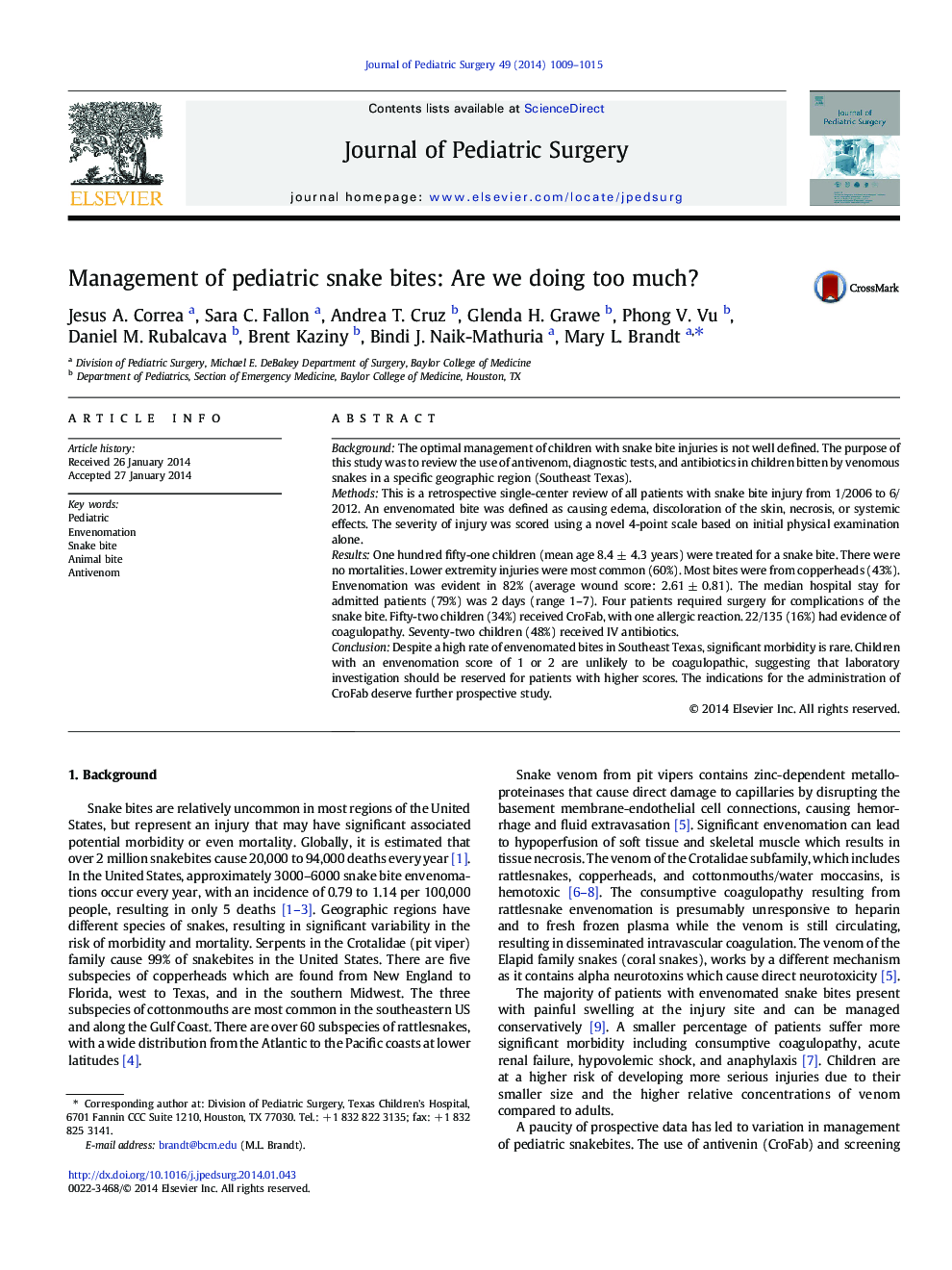| Article ID | Journal | Published Year | Pages | File Type |
|---|---|---|---|---|
| 6217390 | Journal of Pediatric Surgery | 2014 | 7 Pages |
BackgroundThe optimal management of children with snake bite injuries is not well defined. The purpose of this study was to review the use of antivenom, diagnostic tests, and antibiotics in children bitten by venomous snakes in a specific geographic region (Southeast Texas).MethodsThis is a retrospective single-center review of all patients with snake bite injury from 1/2006 to 6/2012. An envenomated bite was defined as causing edema, discoloration of the skin, necrosis, or systemic effects. The severity of injury was scored using a novel 4-point scale based on initial physical examination alone.ResultsOne hundred fifty-one children (mean age 8.4 ± 4.3 years) were treated for a snake bite. There were no mortalities. Lower extremity injuries were most common (60%). Most bites were from copperheads (43%). Envenomation was evident in 82% (average wound score: 2.61 ± 0.81). The median hospital stay for admitted patients (79%) was 2 days (range 1-7). Four patients required surgery for complications of the snake bite. Fifty-two children (34%) received CroFab, with one allergic reaction. 22/135 (16%) had evidence of coagulopathy. Seventy-two children (48%) received IV antibiotics.ConclusionDespite a high rate of envenomated bites in Southeast Texas, significant morbidity is rare. Children with an envenomation score of 1 or 2 are unlikely to be coagulopathic, suggesting that laboratory investigation should be reserved for patients with higher scores. The indications for the administration of CroFab deserve further prospective study.
